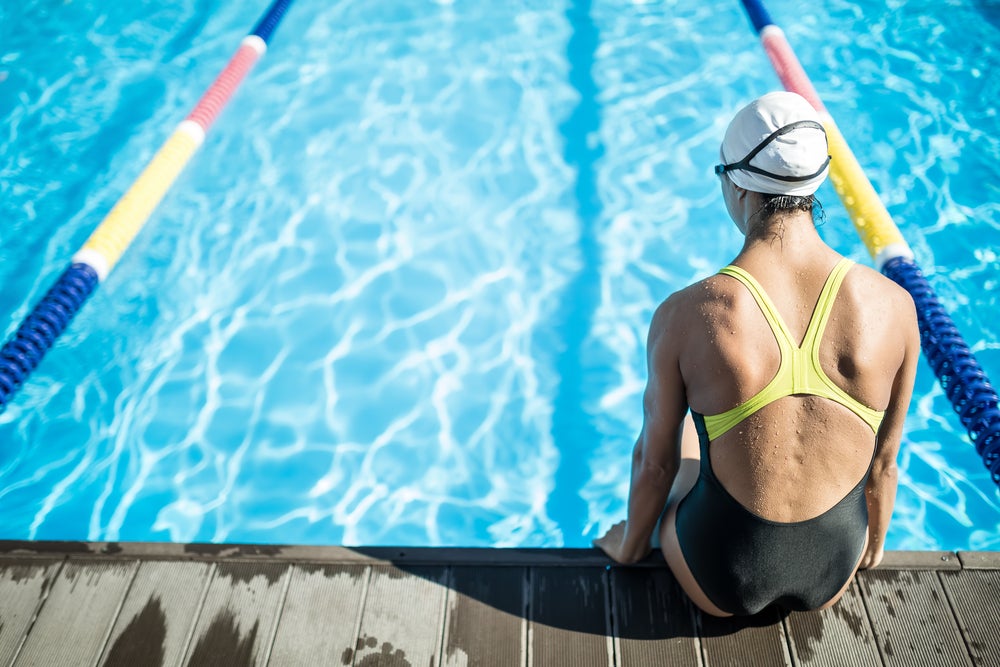Beginner's Luck: 8 Tricks to Keeping Swimming Simple

Photo: Shutterstock.com
Swimming can be the most daunting part of triathlon if you are not a fish by nature. So much to remember! How can we be in water and move and remember ALL the things?
Here are some easy beginner swim tricks to simplify swimming when beginning. Swim lingo and technique tweaks will always be necessary as you grow as a triathlete, but remember you have to start somewhere. A great place to start is with swim lessons. However, if you are competent doing a little freestyle on your own, then these eight tips will help sharpen your mermaid or shark freestyle fins.
1. Be the Gorgeous Sea Creature You Are
Envision yourself gliding through the water. Even if you feel like you are flailing and drowning, just picture grace and swans and other amazing water creatures and be one of them in your mind.
2. Also, Be Like a Duck
Keep your hands loose and like duck feet (or like duck hands, if ducks had hands). After your hands enter the water (lead with your middle finger and try not to make a lot of splash), ensure your fingers are angled down and hands ever-so open to get the maximum surface area. Think of Andy Potts’ giant man-swimming hands. Be like those!
3. Also, Be Like a Clock
You want your hands to enter the water at about 11 and 1 o’clock on the imaginary clock, although 10:45 and 1:15 is okay too. You want your hands to go into the water at shoulder distance, fingers easy and loose and wide (see No. 2). Imagine paddling a surfboard when you are beginning, since the easiest thing to do when starting to swim is to have your hands crossing over your center line. Even though you do not want your hands in reality going as wide as paddling on a surfboard, if you have issue with cross-over with your shoulders, this mental trick will help widen your stroke naturally.
4. Also, Be Like a Windmill
Focus on windmill-speedy turn-over with your arms. You do not need to be frantic (windmills are smooth, remember), but smooth plus speedy turnover is a great habit to start early.
5. Don’t Forget to Catch
Catch correctly and soon: imagine holding out your hand for a kiss and point your fingers and wrist down, as your hand enters the water. Catch the water early. You can use paddles to help figure out the catch, though you don’t want to swim with them outside of drills when you are starting out learning to swim. [Strokemaker paddles without the wrist straps will tell you right away if you are catching in the right stratosphere! Those suckers will fall right off or slap the water immediately if you aren’t.]
6. Don’t forget to Breathe
Breathing should be bilaterally capable; in other words, you should know how to breathe on each side, which often means that you need to do a lot of practicing that way. However, change it up to make yourself a more versatile swimmer. I like to breathe bilaterally on the slower sets, but on sprint efforts, breathe as I would on race day (which is usually same side, every 2 strokes). Another option is to alternate breathing one side down the pool, and then the other side on the return. For longer distance races like Ironman, I still tend to breathe bilaterally in training, because that’s how I breathe in a race due to neck issues—but everyone is different. Find what works for you, but know how to breathe to both sides.
7. Exit Stage Left
After the catch and pull, your hand ideally should come out of the water at your hip, or slightly below (if you have long, monkey-like arms like I do). Practice some sets where your thumb brushes against your hip to make yourself aware of the position. Don’t touch your hip each time with your hand, however, as you do not want your arm too close to the body as that will restrict the recovery part of the stroke. But you can definitely use the hip-brush tip as a check-in.
8. Don’t Forget to Exhale!
Remember to fully exhale on the breathing. It’s easy to get into the habit of gulping air on the inhale, and not releasing all of it into the water. Focus on easy and controlled breathing, and enjoy the bubbles!
Swimming is a sport with serious technique and refinements, so remember to be patient and gentle with yourself as you start out.
While even the eight tips above are a lot to remember while you are in the water, at the minimum just remember: Duck, Clock, Windmill, and Breathe—and you’ll be on your way.